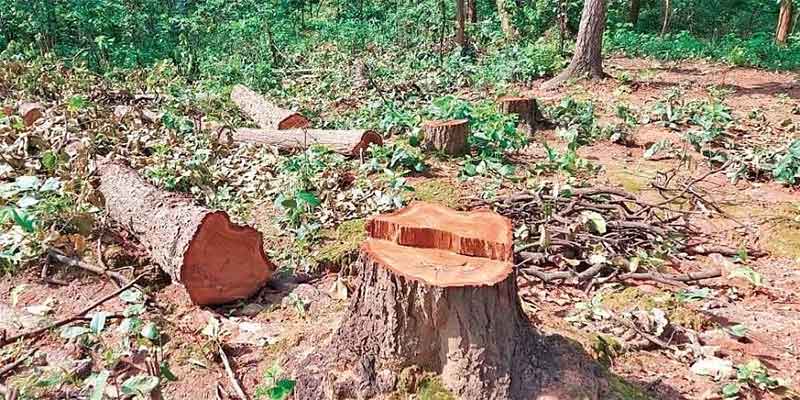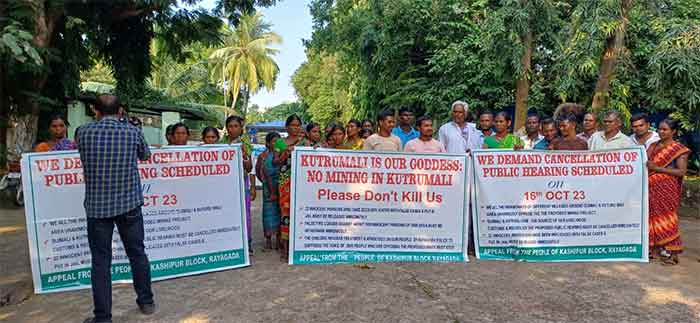
To
Shri Rajiv Gauba
Cabinet Secretary
Govt of India
I have just come across a public notice issued by the Union Ministry of Mines proposing a few far reaching amendments to the Mines & Minerals (Development & Regulation) Act, 1957 (MMDRA). I have enclosed here a copy of the relevant notice [Ministry of Mines No. M VI-1/3/2022- Mines VI dated 25-502022] for your ready reference.
Prima facie, the above cited proposal is violative of the provisions of two important Central legislations, namely, Panchayats (Extension to the Scheduled Areas) Act (PESA), applicable to the tribal areas notified under the Fifth Schedule to the Constitution and the Scheduled Tribes and Other Traditional Forest Dwellers (Recognition of Forest Rights) Act or, otherwise known as the Forest Rights Act (FRA), applicable to all forest areas. These proposals also pose a serious threat to certain strategic atomic minerals such as Monazite, a raw material for Thorium, the fuel being considered by the Dept of Atomic Minerals (DAE) for the future development of India’s nuclear facilities.
PESA & FRA:
The PESA Act mandates the prior consent of the local tribal Gram Sabhas in the Scheduled Areas before decisions on any issue that affects the lives of the tribals can be taken. The FRA similarly mandates the prior consent of the local Gram Sabhas before any decision can be taken on an activity that directly or indirectly affects the interests of the tribals and the other traditional forest dwellers who are dependent on the forest lands and forest resources. It is distressing that the above cited Public Notice and the amendments cited fail to mention either of these Acts. Such a unilateral legislative measure violates the two important laws, namely, the PESA and the FRA and, therefore, it cannot be legally sustained.
In such matters, it is surprising that the Ministry of Mines should fail to seek the considered views of the National Commission for Scheduled Tribes (NCST), a Constitutional body set up under Article 338A and the views of the Ministry of Tribal Affairs, before issuing such a notification.
Atomic Minerals:
The beach sands along the coasts of Odisha, AP, T. Nadu and Kerala are rich in atomic minerals, especially Monazite, the raw material for the extraction of Thorium, which constitutes the primary fuel for India’s third stage nuclear development programme. The Indian beaches have a significantly large proportion of the Monazite resources in the world.
The British had exploited this at the cost of India prior to Independence, though in a limited manner. However, on the advice of Dr Homi J Bhabha, the architect of the country’s nuclear development strategy, the then Prime Minister, Nehru had decided to ban private mining of the beach sands immediately after India became independent.
Despite pressure from many foreign agencies to get access to these precious minerals through some domestic private companies, the successive governments resisted opening up these minerals for private mining, till the previous UPA government opened the floodgates to it during its tenure. It is important to note that, no matter which atomic mineral is extracted, it invariably contains Monazite as an impurity. Though the Ministry of Mines and the DAE had imposed a low upper threshold for the presence of Monazite in the atomic minerals extracted, over the time, the UPA government relaxed the need for “Monazite Certification” at the exporting ports, creating an enormous scope for Monazite being smuggled out on a large scale. The Madras High Court took note of this suo moto and ordered a thorough investigation. I had also filed a Writ Petition in the Supreme Court on a similar matter concerning AP. In the matter under adjudication before the Supreme Court, the Ministry of Mines had filed a statement in 2019 to the effect that private mining of the beach sand minerals would not be permitted. This was a welcome step taken by the government.
Since then, as expected, there has been intense pressure from many private companies, indirectly supported by foreign agencies, to relax the rules once again to allow private mining of the beach sand minerals, apparently for getting access to valuable atomic minerals, especially Monazite. It appears that the present government has unwittingly or otherwise fallen prey to this, as evident from the changes proposed now in Para 6 of the latest Public Notice. These changes effectively bring back private miners into beach sand mining, a sure way to open the floodgates to the export of Monazite, to the detriment of the national interest. In my view, this should not be permitted under any circumstances.
I had earlier cautioned the government on this vide my letter dated 16-11-2021 addressed to your office. I have enclosed a copy of that letter for your reference.
Mineral Exploration in Forest Areas:
The change proposed in Para 3 of the Public Notice implies doing away with forest clearance for mineral exploration activity, which too will have far reaching adverse implications not only for the forest resources but also for the wild life protected under the WildLife Protection Act, as drilling of borewells, movement of heavy vehicles and the related activity would have an adverse impact on the wild life. It is surprising that the Ministry of Environment has not objected to this.
I get the feeling that the amendments now being proposed to the MMDRA are driven more by the private miners than by what is good for the national interest.
I hope that the government desists from proceeding further on this.
Regards,
Yours sincerely,
E A S Sarma
Visakhapatnam

















































